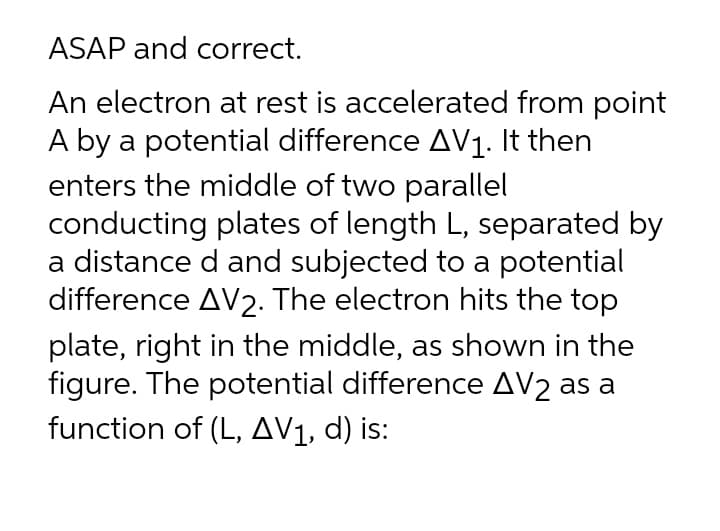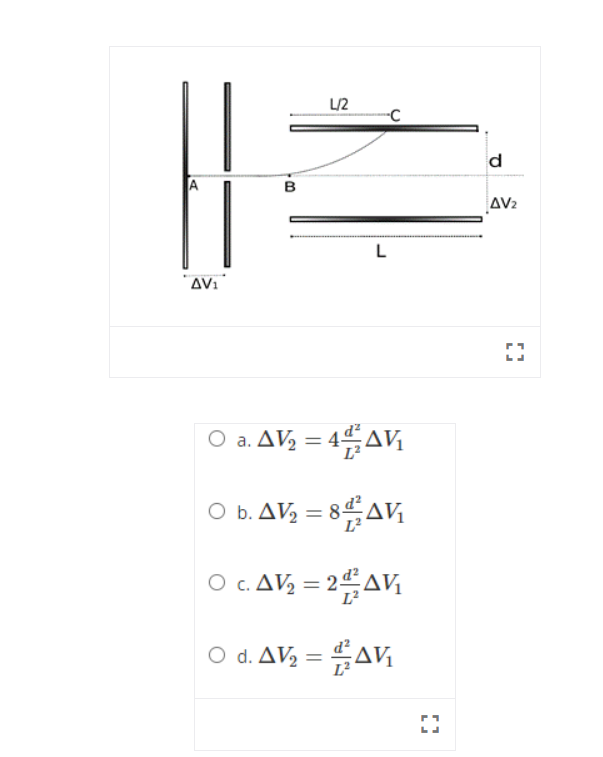An electron at rest is accelerated from point A by a potential difference AV1. It then enters the middle of two parallel conducting plates of length L, separated by a distance d and subjected to a potential difference AV2. The electron hits the top plate, right in the middle, as shown in the figure. The potential difference AV2 as a function of (L, AV1, d) is:
An electron at rest is accelerated from point A by a potential difference AV1. It then enters the middle of two parallel conducting plates of length L, separated by a distance d and subjected to a potential difference AV2. The electron hits the top plate, right in the middle, as shown in the figure. The potential difference AV2 as a function of (L, AV1, d) is:
Related questions
Question
4

Transcribed Image Text:ASAP and correct.
An electron at rest is accelerated from point
A by a potential difference AV1. It then
enters the middle of two parallel
conducting plates of length L, separated by
a distance d and subjected to a potential
difference AV2. The electron hits the top
plate, right in the middle, as shown in the
figure. The potential difference AV2 as a
function of (L, AV1, d) is:

Transcribed Image Text:L/2
-C
d
в
AV2
*AV1
O a. AV½ = 4AV,
%3D
O b. AV, = 8AV,
O c. AV½ = 2AV,
O d. ΔVs =DAV
Expert Solution
This question has been solved!
Explore an expertly crafted, step-by-step solution for a thorough understanding of key concepts.
Step by step
Solved in 4 steps
